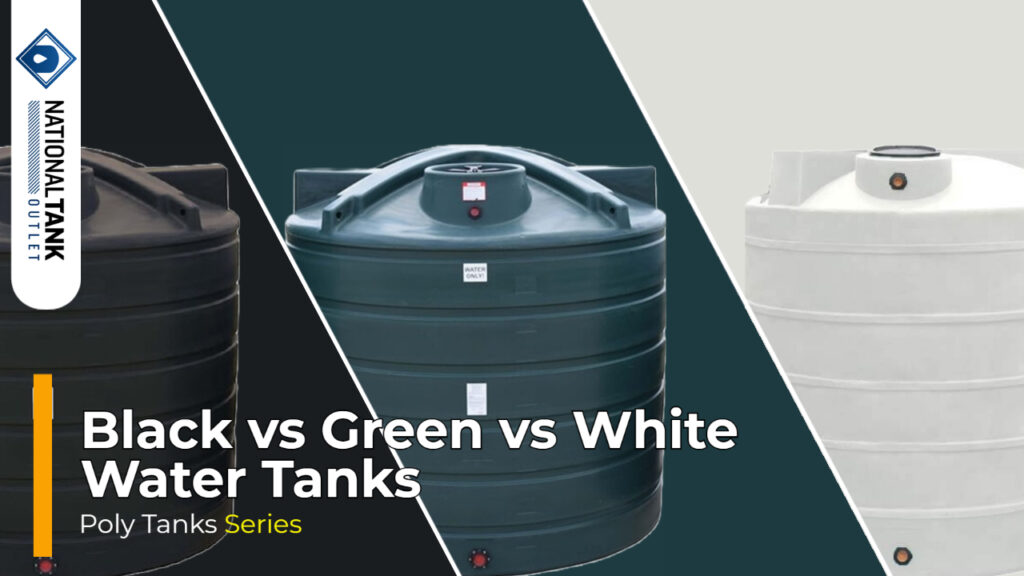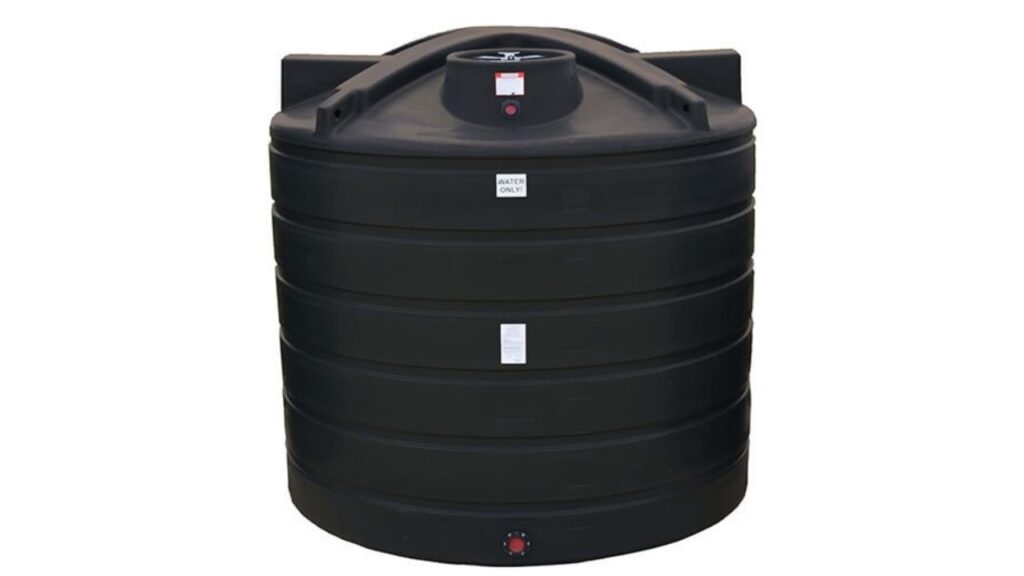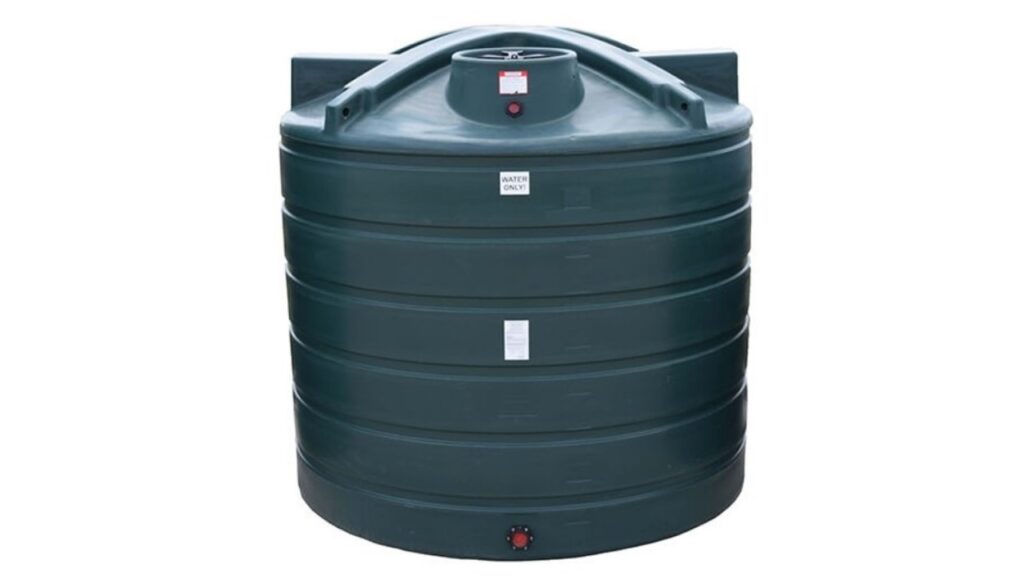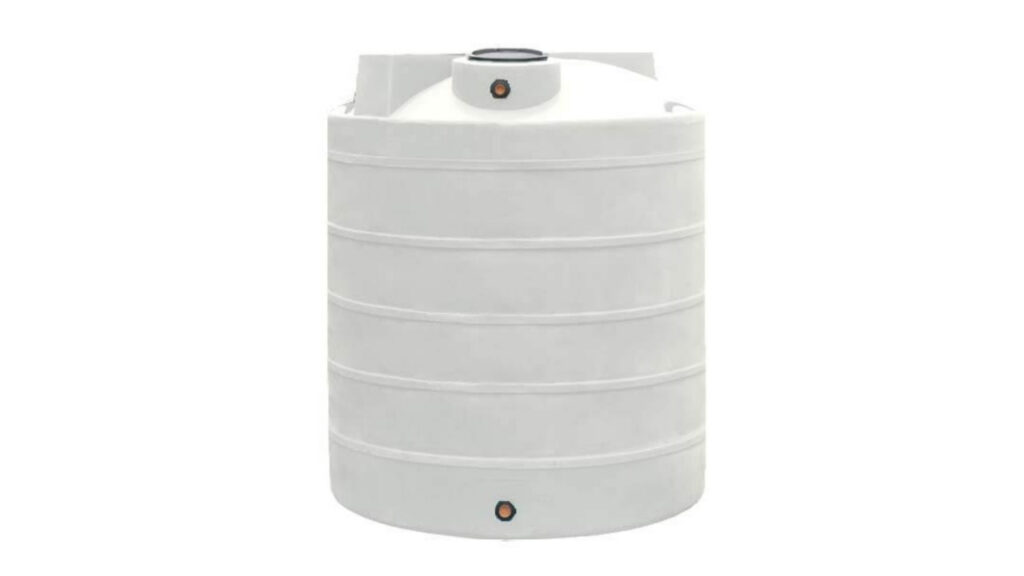
Poly water tanks are bulk volume containers dedicated to water storage, handling, and use applications. Dedicated water tanks are primarily potable (drinking) water grade quality when made in the USA by leading manufacturers. While non-potable grade poly water tanks are available, they are less common. Potable water tanks are made using FDA approved, food grade materials and the tanks are certified to meet the quality guidelines of ANSI/NSF Standard 61 for freshwater intended for human consumption.
Poly water tanks come in a range of storage capacities and various colors. Water tank color options are mainly black, green, and white. Blue, brown, and other colors are sometimes available. Color is important whenever choosing a poly water tank because it directly relates to long term water quality, temperature, tank cleanliness as well as certain other specific details.
Factors Affected by Tank Color
There are two categories of factors affected by tank color: physical and tank specific. Examples of physical factors would be heating from sunlight and the growth of algae. Examples of tank specific factors would be how easy it is to see inside the tank or visual appeal for the owner.
It is a physical fact that dark colored materials absorb more heat energy from the sun than light colored materials. Dark colored objects also tend to block light better than light colored ones if the object has some translucency. For water tank colors, these factors relate to the storage conditions experienced by the stored water. Darker colored tanks tend to block more sunlight but absorb more heat, meaning less light will reach water inside the tank but the water will often be warmer.
On the growth of algae, a common concern in outdoor water tanks, algae require sunlight to grow. Similar to plants, algae rely on photosynthesis, meaning plenty of sunlight and algae can flourish; no sunlight and algae will not grow at all. Therefore, a darker tank such as a black tank that better limits sunlight infiltration will also be better at limiting algal growth. See our post on 10 ways to reduce algae in water tanks for tips and tricks on how to limit algae.
Poly water tanks often have to be visually inspected on the inside of the tank so an owner can check on their water quality, look for any algal growth, or see if the tank needs cleaned. The ability and/or ease of this activity is directly related to how much light is inside the tank for viewing: the more light, the easier to inspect; the less light, the more difficult.
A factor such as visual appeal is in the preference of the owner and how a specific color may better match or blend-in on their property.
Pros and Cons of Different Water Tank Colors
The following are the pros and cons of the different water tank colors and will consider the primary concerns for water temperature, algae, cleanliness, and visibility.
Black Water Tanks
- Best resistance to sunlight infiltration
- Some models engineered to completely prevent light infiltration
- Best to prevent algae growth
- Best for outdoor installation
- Dark color decreases tank visibility (either a pro or a con)
- Worst for absorbing heat from sunlight
- Worst for warming water within the tank
- Worst for easily seeing current water levels or stock quality
- Worst for easily seeing when the tank interior needs to be cleaned

Green Water Tanks
In general, green water tanks can be considered nearly identical to black water tanks in practicality, functionality, and their pros and cons in water storage and handling. Green water tanks are slightly lighter in color compared to black water tanks and therefore offer the same benefits and advantages, just to a slightly lesser degree.
A main positive point for green water tanks is that they are a more nature-neutral color compared to either black or white water tanks. Green water tanks blend in better to the natural environment, making the tank overall less noticeable and perhaps more visually appealing for certain settings and properties.

White Water Tanks
- Best for reflecting sunlight energy
- Best for keeping cooler water temperatures
- Best for monitoring wear and tear as the tank ages
- Best for easy visualization of stored water levels and quality
- Best for easy visualization of when it is time to clean the water tank
- Best for indoor installation and use
- Light color increases tank visibility (either a pro or a con)
- Worst for the amount of sunlight infiltration
- Worst for algae growth

Takeaway | Black vs Green vs White Water Tanks
All other design and manufacturing specifications and details worth consideration are the same for each of these different colored water tanks. Tank color alone does not affect the suitability of the water tank for an application or alter its potential capabilities. Storage capacity, tank size, unique designs, number or placement of fittings, lid size or position, and overall tank shape are not affected by color but are attributes of different poly water tank manufacturers, water tank types or volume capacities.
In short, black water tanks are best for preventing algal growth but often keep water temperatures warmer. White water tanks are best for visually seeing inside the tank, keeping cooler water temperatures, and when algae will not be a concern. Green water tanks provide much in the same way as black water tanks but are best when wanting to have the water tank better match its environment.
If looking for ANSI/NSF 61 certified water tanks, you can find our selection here. If you have any questions or need any help in product selection, contact us, our friendly support team is always ready to help.